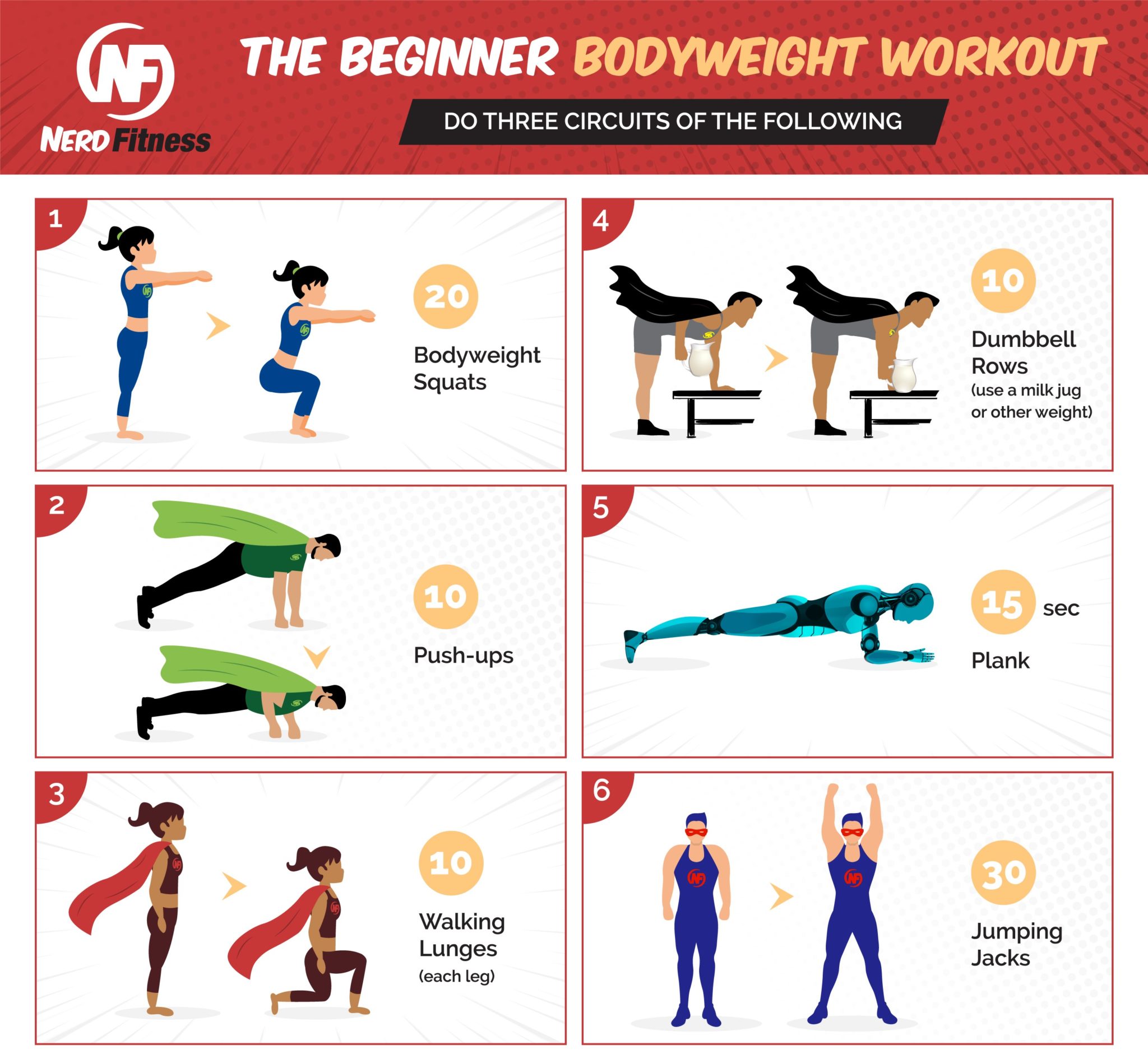Unleash Your Inner Powerhouse: A Comprehensive Guide to Building Muscle with Bodyweight Exercises
The idea that you need heavy weights and an expensive gym membership to build a strong, muscular physique is a common misconception. While barbells and dumbbells certainly have their place, the truth is that your own bodyweight offers an incredibly versatile and effective tool for building significant muscle, strength, and functional fitness. From ancient warriors to modern calisthenics athletes, people have sculpted impressive physiques using nothing more than their own bodies for centuries.
This comprehensive guide will walk you through the principles, exercises, and strategies you need to unlock your body’s full potential and build a muscular, resilient physique using only bodyweight exercises.
The Science Behind Bodyweight Muscle Building
Before diving into the "how," let’s briefly touch on the "why." Muscle growth, or hypertrophy, occurs when muscle fibers are subjected to stress (from exercise) that causes microscopic damage. In response, your body repairs and rebuilds these fibers stronger and larger, adapting to the demand. The key drivers for this process are:
- Mechanical Tension: The actual force exerted on the muscle fibers during an exercise.
- Metabolic Stress: The accumulation of byproducts (like lactic acid) in the muscle, often felt as the "burn."
- Muscle Damage: The microscopic tears in muscle fibers that trigger the repair process.
Bodyweight exercises, when performed correctly and progressively, can effectively create all three of these stimuli, leading to robust muscle growth. The secret lies not just in doing exercises, but in doing them smarter.
The Pillars of Bodyweight Muscle Growth
Just like with any form of strength training, three fundamental pillars support effective muscle building:
- Progressive Overload: This is the most crucial principle. For muscles to grow, they must continuously be challenged with greater demands. With bodyweight, this means finding ways to make exercises harder over time.
- Proper Nutrition: Muscles cannot grow without the right fuel. Adequate protein, carbohydrates, and healthy fats are essential.
- Adequate Rest & Recovery: Muscle growth happens outside the gym. Your body needs time to repair and rebuild.
Essential Bodyweight Exercises for Every Muscle Group
Let’s break down the foundational movements that will form the core of your bodyweight muscle-building routine. For each, we’ll suggest variations from beginner-friendly to more advanced. Aim for controlled movements, focusing on the mind-muscle connection.
1. Push Exercises (Chest, Shoulders, Triceps)
-
Push-ups: The king of bodyweight upper-body pushes.
- Beginner: Incline Push-ups (hands on a counter, table, or elevated surface). The higher the surface, the easier.
- Standard: Floor Push-ups (hands shoulder-width apart, chest to the floor, maintain a straight line from head to heels).
- Intermediate: Decline Push-ups (feet elevated on a bench or chair), Diamond Push-ups (hands close together, forming a diamond shape for more triceps emphasis).
- Advanced: Pseudo Planche Push-ups (hands closer to hips, lean far forward), One-Arm Push-ups (requires significant core and unilateral strength).
-
Dips: Excellent for chest, shoulders, and triceps, often providing a deeper stretch than push-ups.
- Beginner: Bench Dips (hands on a sturdy bench or chair, feet on the floor, bend elbows to 90 degrees). Can be made harder by elevating feet or adding weight (e.g., a book on your lap).
- Intermediate/Advanced: Parallel Bar Dips (requires parallel bars or two sturdy surfaces). Lean forward slightly for more chest emphasis; stay upright for more triceps.
2. Pull Exercises (Back, Biceps)
This category is often the most challenging to progress with purely bodyweight, as it requires overcoming gravity in a different way. However, it’s absolutely vital for balanced development and injury prevention.
-
Inverted Rows: Your primary bodyweight back builder.
- Beginner: Table Rows (lie under a sturdy table, grab the edge, pull your chest towards it).
- Standard: Horizontal Rows (using a low bar, rings, or a sturdy railing). The more horizontal your body, the harder it is.
- Advanced: One-Arm Inverted Rows.
-
Pull-ups / Chin-ups: The ultimate bodyweight back and bicep exercise.
- Beginner: Negative Pull-ups (jump or step up to the top position and slowly lower yourself down), Assisted Pull-ups (use a resistance band or a spotter).
- Standard: Pull-ups (overhand grip, wider than shoulder-width, pull until chin clears the bar). Chin-ups (underhand grip, shoulder-width apart, targets biceps more).
- Advanced: L-Sit Pull-ups, Archer Pull-ups, One-Arm Pull-ups.
3. Leg Exercises (Quads, Hamstrings, Glutes, Calves)
Don’t neglect your legs! They are your largest muscle group and contribute significantly to overall strength and metabolism.
-
Squats: The fundamental lower body movement.
- Beginner: Box Squats (squat down until you tap a box or chair, then stand up).
- Standard: Bodyweight Squats (feet shoulder-width apart, descend until thighs are parallel to the floor or lower, keeping chest up).
- Intermediate: Sumo Squats (wider stance, toes out, targets inner thighs/glutes), Jump Squats (adds explosive power).
- Advanced: Pistol Squats (single-leg squat, requires balance and strength), Sissy Squats (focuses heavily on quads).
-
Lunges: Great for unilateral strength and balance.
- Standard: Forward Lunges, Reverse Lunges (step back), Lateral Lunges (step to the side).
- Intermediate: Jumping Lunges (explosive variation), Bulgarian Split Squats (one foot elevated behind you).
- Advanced: Pistol Lunges (similar to pistol squat but with a lunge motion).
-
Calf Raises: For strong, shapely calves.
- Standard: Standing Calf Raises (on flat ground or with balls of feet on an elevated surface for greater range of motion).
- Advanced: Single-Leg Calf Raises.
4. Core Exercises (Abs, Obliques, Lower Back)
A strong core is vital for all movements, posture, and injury prevention.
-
Plank: Develops full-body isometric strength.
- Standard: Forearm Plank (maintain a straight line from head to heels, engage glutes and abs).
- Variations: High Plank (on hands), Side Plank, Plank with Hip Dips, Plank Jacks.
-
Leg Raises: Targets lower abs.
- Standard: Lying Leg Raises (lie on your back, raise straight legs to 90 degrees, lower slowly).
- Variations: Hanging Leg Raises (more advanced, using a pull-up bar), Knee Tucks.
-
Crunches / Sit-ups: Classic abdominal exercises.
- Standard: Crunches (upper back lifts off the floor), Sit-ups (entire back lifts off the floor).
- Variations: Bicycle Crunches (targets obliques), Reverse Crunches (lifts hips off the floor).
Mastering Progressive Overload with Bodyweight
This is where the magic happens for bodyweight muscle building. Without external weights, you need creative ways to make exercises harder.
- Increase Reps & Sets: The most straightforward method. If you can do 3 sets of 10 push-ups, aim for 3 sets of 12, then 15.
- Decrease Rest Time: Shortening the rest periods between sets increases metabolic stress and time under tension, challenging your endurance and muscle capacity.
- Increase Time Under Tension (TUT): Slow down your repetitions. Instead of a quick push-up, take 3 seconds to lower and 3 seconds to push up. Focus on the eccentric (lowering) phase, which causes more muscle damage and growth.
- Change Leverage/Angle: This is key for bodyweight.
- Push-ups: Move from incline to flat to decline, then to pseudo planche or one-arm.
- Squats: Progress from bodyweight to pistol squats.
- Rows: Make your body more horizontal.
- Unilateral (Single-Limb) Exercises: Working one limb at a time significantly increases the load on that limb and improves balance. Examples: Pistol Squats, One-Arm Push-ups, Single-Leg Calf Raises.
- Add Explosiveness (Plyometrics): Exercises like jump squats, clap push-ups, or jumping lunges build power and can stimulate fast-twitch muscle fibers.
- Add External Resistance (Optional): While strictly "bodyweight," once you’ve mastered advanced variations, a weighted vest or a backpack filled with books can provide additional resistance to keep progressing.
Structuring Your Bodyweight Workout Routine
Consistency is paramount. Aim for 3-4 full-body workouts per week, allowing a rest day between sessions. A full-body approach is often most effective for bodyweight training, as it allows you to hit each muscle group frequently.
Sample Full-Body Bodyweight Routine (Perform 3 times a week, e.g., Mon/Wed/Fri):
- Warm-up (5-10 minutes): Light cardio (jumping jacks, high knees), dynamic stretches (arm circles, leg swings, torso twists).
- Workout (45-60 minutes):
- Push: Push-up variation (3-4 sets of 8-15 reps)
- Pull: Inverted Row variation (3-4 sets of 8-15 reps)
- Legs: Squat variation (3-4 sets of 10-20 reps)
- Legs (Unilateral): Lunge or Bulgarian Split Squat variation (3-4 sets of 8-12 reps per leg)
- Core: Plank (3 sets, hold for 30-60 seconds)
- Core: Leg Raise variation (3 sets of 12-20 reps)
- Cool-down (5-10 minutes): Static stretches (hold each stretch for 20-30 seconds).
Rep Ranges: For muscle hypertrophy, aim for 8-15 repetitions per set for most exercises. For advanced, highly challenging exercises (like one-arm push-ups), even 3-6 reps per set are effective due to the high intensity.
Rest Between Sets: 60-90 seconds is a good starting point. Adjust based on the exercise difficulty and your fitness level.
The Undeniable Role of Nutrition
You can train like a beast, but if your nutrition isn’t dialed in, your muscle growth will be severely stunted.
- Caloric Surplus: To build muscle, you generally need to consume more calories than you burn. Aim for a moderate surplus (e.g., 250-500 calories above maintenance).
- Protein Intake: Protein is the building block of muscle. Aim for 1.6-2.2 grams of protein per kilogram of body weight (0.7-1 gram per pound). Distribute this intake throughout the day.
- Complex Carbohydrates: Fuel your workouts and replenish glycogen stores. Think whole grains, fruits, and vegetables.
- Healthy Fats: Essential for hormone production and overall health. Avocados, nuts, seeds, olive oil are great sources.
- Hydration: Drink plenty of water throughout the day. Dehydration impairs performance and recovery.
Rest, Recovery, and Sleep
Muscle doesn’t grow during your workout; it grows when you’re resting and recovering.
- Sleep: Aim for 7-9 hours of quality sleep per night. This is when your body produces crucial growth hormones and performs most of its repair work.
- Active Recovery: Light activities like walking, stretching, or foam rolling on rest days can aid blood flow and reduce soreness.
- Listen to Your Body: Don’t be afraid to take an extra rest day if you feel overly fatigued or sore. Overtraining can lead to plateaus and injury.
Mind-Muscle Connection
This often-overlooked aspect can significantly enhance your results. Instead of just "going through the motions," actively think about and squeeze the target muscle group as you perform each repetition. For example, during a push-up, consciously contract your chest, shoulders, and triceps. This improves neural activation and muscle recruitment.
Consistency and Patience
Building muscle takes time, dedication, and consistency. There will be days when you feel strong and days when you feel weak. Embrace the journey, celebrate small victories, and stay consistent with your training and nutrition. Don’t compare your progress to others; focus on becoming the best version of yourself.
Common Mistakes to Avoid
- Ignoring Progressive Overload: If you do the same 3 sets of 10 push-ups indefinitely, you won’t grow.
- Neglecting Nutrition: Under-eating, especially protein, is a common growth stopper.
- Poor Form: Sacrificing form for more reps leads to injury and inefficient muscle targeting. Always prioritize quality over quantity.
- Skipping Warm-up/Cool-down: Increases injury risk and hinders flexibility.
- Overtraining/Undertraining: Finding the right balance is crucial. More isn’t always better.
- Lack of Pulling Exercises: An unbalanced routine focused only on pushing can lead to poor posture and shoulder issues.
Conclusion
Building muscle with bodyweight exercises is not only possible but incredibly rewarding. It develops functional strength, improves body awareness, and can be done anywhere, anytime, without equipment. By understanding the principles of progressive overload, mastering fundamental movements, fueling your body correctly, and prioritizing recovery, you can transform your physique and unlock a new level of strength and fitness. Embrace the challenge, stay consistent, and prepare to be amazed by what your own body can achieve.



